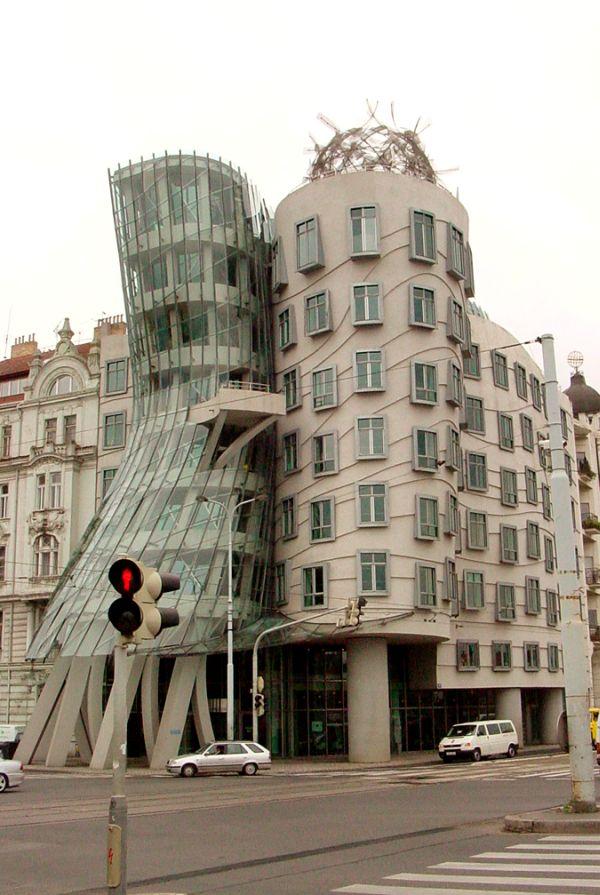Image by cwwycoff1 American architect Julia Morgan said: “Architecture is a visual art, and the buildings speak for themselves.” Whether or not you agree with Morgan’s sentiments, her words could not have related more perfectly to these bizarre architectural specimens from far flung corners of the world. Here are six buildings that really do speak for themselves! Hang Nga Guesthouse, Vietnam Images by Tom Ravenscroft The Hang Nga Guesthouse in Vietnam is truly one of the world’s most bizarre buildings. In terms of appearance, it looks like it’s been plucked right out of a fairy tale and opened up to paying guests – or people who just want to call in and explore the maze of twisting corridors and hidden rooms. Conceptually, nothing fits. Hang Nga Guesthouse conforms to no particular architectural style, and none of the windows and doors are the same shape. Inside and out, large animal statues peer disconcertingly at passers-by. Here are some reviewsyou might find useful if you’re thinking of dropping by next time you’re in Vietnam. WonderWorks, Pigeon Forge, Tennessee Images by @cdharrison The imaginatively bizarre design of WonderWorks couldn’t be more appropriate for a building of adventure that will literally turn your world upside down. Inside you’ll find all manner of interactive wonders, from an inversion tunnel to illusion gallery, bubble lab and “Wonder Coasters”. You may also want to test your abilities in the Challenge Zone, Space Zone and, if you have what it takes, the Disaster Zone. Click here to find out more. The Dancing House, Prague Image by Omar Omar The Dancing House is the nickname of a building holding several multinational companies in downtown Prague, Czech Republic. The building was designed in 1992 by Vlado Milunic in cooperation with Canadian architect Frank Gehry on a vacant riverfront plot. Images by Hermés The Dancing House was completed in 1996 on the site of a previous building demolished in the 1945 bombing of Prague. It opened amid a great deal of architectural controversy but has since become a local landmark. Vaguely resembling a pair of dancers, the eponymous Dancing House was originally named Fred and Ginger, after Fred Astaire and Ginger Rogers. Nakagin Capsule Tower, Tokyo Image by pict_u_re The Nakagin Capsule Tower is a mixed use residential and office tower completed in 1972. The avant-garde design was considered to be the way of the future when the building was designed. Built around two interconnected concrete towers, the live/work “capsules” are designed to be replaceble and secured to the structure only by four high-tension bolts. Images by pict_u_re Image by Chris 73 (Image licensed under Creative Commons Attribution-ShareAlike 3.0 Unported) Individual capsules are tiny, measuring only 8 feet long by 12 feet wide and 7 feet high. Should an occupant desire more space, additional capsules may be attached to make the overall accomodation larger. Despite its futuristic design and grand aspirations of the young Japanese architects behind the project, the building has fallen into disrepair. The Nakagin Capsule Tower remains occupied but none of the capsules have ever been replaced. Lotus Temple, India Image by souravdas The Bahá’í House of Worship in Delhi, India, is popularly known as the Lotus Temple because of its distinctive flower-likeshape. Completed in 1986, it has won numerous architectural awards and has been the subject of hundreds of articles.




Images by MACSURAK
Inspired by the lotus flower, its design is composed of 27 free-standing marble clad “petals” arranged in clusters of three to form nine sides. Lotus Temple welcomes four million visitors each year. As of late 2002, it had attracted more than 50 million visitors, making it one of the most visited buildings in the world. During those years, visitor numbers to Lotus Temple surpassed those of the Eiffel Tower and the Taj Mahal.
Beijing National Stadium, China

Image by Francisco Diez
The Beijing National Stadium, built for the 2008 Summer Olympics and Paralympics, is colloquially known as the Bird’s Nest due to its strange form and bizarre, twig-like appearance. The $423 million stadium is the world’s largest steel structure, and certainly the most impressive looking bird’s nest!
Images by cmaccubbin
The design emerged from a study of Chinese ceramics, with steel beams to hide supports for the retractable roof – leading to the famous bird’s nest appearance. But ironically the retractable roof was later removed from the design after inspiring the design’s most celebrated aspect. Plans are currently underway for a shopping mall and a hotel, to help revive the stadium which has been under-utilised since the 2008 competition.






0 komentar:
Posting Komentar